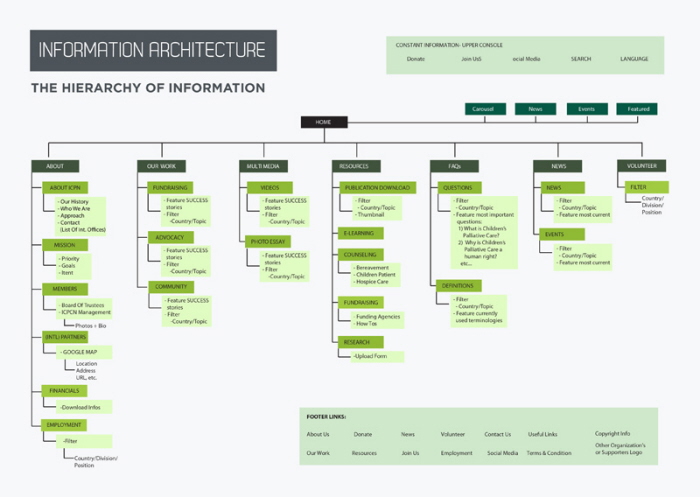
Whether you use the bottom navigation bar on iOS or Android, it should be designed to provide a unified experience across different screens of your app. Although this might seem daunting, it is actually quite easy.
The bottom navigation bar is used to make your most important sections of the app more accessible and easier to navigate. These areas include the top-level pages and main pages as well as top-level features. There are some design principles that you can follow, even though the size of your bottom navigation bars may differ depending on which operating system you use.
Your app's overall design should reflect the color scheme used for your bottom navigation bars. A color scheme that is reminiscent of your app's design will make your navigation bar look more polished. Be careful not to use too many colors. You should avoid choosing colors that are too similar. Instead, pick a color that contrasts well with the elements of your screen. A borderless style is also a good option for your navigation bars to make them feel more like a design element.

Your navigation bar should be at the top of the page if you are using iOS, or at the bottom if you are using Android. If you use iOS, your navigation bars will only contain the "back button", while the "forward button" will disappear. However, if you are using Android, your navigation bar will contain both the back and forward buttons.
You can use a BottomNavigationBar to display the title of the currently selected item. This will allow your users to quickly see the most important items within your app. Depending upon the size of the navigation bar, you can display the title for a single item or several items at once. The title can be displayed in several ways, including a borderless style, a fixed-space style, or a text label style. Additionally, you have three options for setting the visibility of your title.
You can also set a specific _selectedIndex property to display the index of the item that was selected. This property can be modified to cause the navigation bar to reload items that have been previously selected. This can be used to refresh your navigation bars when you scroll down into a different area.
The bottom navigation bar is one of the more important design features in mobile app UI design. To help reduce clutter on your screen it should be combined with other navigation bars like the one at the top. A bottom navigation bar is not always required in an app. You might decide to not include the bottom navigation bars depending on the app's size and content.

The number of items in your navigation bar is another important design element to be aware of. You should aim to keep your navigation bar at three to five items. You may prefer tabs if there are many destinations. Tabs can be useful because they allow you group items together more compactly, and can even help you unload.
FAQ
What types of websites should you make?
This depends on your goals. To build a business around your website, you may want to focus on selling products online. You'll need to build a robust eCommerce site to do this successfully.
Blogs, portfolios, as well as forums are some other popular web types. Each type of website requires different skills. For example, to set up a website, you need to understand blogging platforms such WordPress or Blogger.
You will need to decide how to customize your website's look when you select a platform. There are many templates and themes available that can be used for free on each platform.
Once you've selected a platform to build your website, you can start adding content. You can add images, videos, text, links, and other media to your pages.
You can publish your website online once you have launched it. Visitors can access your website in their browsers once it is published.
Are there any technical skills required to design and build my site?
No. It doesn't matter what HTML or CSS you know. Online tutorials can be found that cover both HTML and CSS.
Can I use HTML & CCS to build my website?
Yes! You should be able to create a website if you have been following the instructions.
You're now familiar with the basics of creating a website structure. However, you must also learn HTML and CSS Coding.
HTML stands for HyperText Markup Language. Think of it like writing a recipe for a dish. It would list the ingredients, directions, and how to do it. HTML is a way to tell a computer which parts are bold, underlined, italicized or linked to other parts of the document. It is the language used to describe documents.
CSS stands to represent Cascading Stylesheets. It's like a stylesheet for recipes. Instead of listing every ingredient and instructions, you create general rules about font sizes, colors, spacing and other details.
HTML tells the browser how to format a web page; CSS tells it how to do it.
Don't be afraid to ask questions if you don’t understand any of these terms. Follow the tutorials and you will soon be creating beautiful websites.
Statistics
- Is your web design optimized for mobile? Over 50% of internet users browse websites using a mobile device. (wix.com)
- Studies show that 77% of satisfied customers will recommend your business or service to a friend after having a positive experience. (wix.com)
- In fact, according to Color Matters, a signature color can boost brand recognition by 80%. There's a lot of psychology behind people's perception of color, so it's important to understand how it's used with your industry. (websitebuilderexpert.com)
- It's estimated that chatbots could reduce this by 30%. Gone are the days when chatbots were mere gimmicks – now, they're becoming ever more essential to customer-facing services. (websitebuilderexpert.com)
- Did you know videos can boost organic search traffic to your website by 157%? (wix.com)
External Links
How To
What is website Hosting?
Website hosting is the location where people go when they visit websites. There are 2 types.
-
The cheapest option is shared hosting. Your website files reside in a server managed by another company. When customers visit your site, their requests travel over the Internet to that server. You then receive the request from the owner of the server.
-
Dedicated hosting is the most expensive option. Your website resides entirely on one server. You and your traffic are protected by the fact that no other websites share server space.
Shared hosting is cheaper than dedicated hosting for most businesses. You can use shared hosting if the company owns the server to provide the resources required for your website.
Both options have their pros and cons. Here are the differences:
Pros of Shared Hosting
-
Lower Cost
-
Simple to Setup
-
Regular Updates
-
It is possible to find it on many web hosting companies
Shared hosting can often cost as little as $10/month. This price often includes bandwidth. Bandwidth is the data transfer speed that you have over the Internet. Even if you are only uploading photos to your blog site, high data transfer rates can still cost you extra.
You will quickly see why you paid so much for your former host once you have started. Many shared hosts offer very little customer support. Although they will help you set up your site occasionally, you are on your own once you have done that.
Providers that offer 24-hour customer support are worth looking into. They will attend to any issues you have while you sleep.
Cons of dedicated hosting
-
More Expensive
-
Fewer Common
-
Requires special skills
With dedicated hosting, everything you need for your website is at your fingertips. You won't worry about how much bandwidth you are using or how much RAM (random Access Memory) you have.
This means that upfront, you'll need to spend a bit more. But once your online business starts, you'll realize you don't need any technical assistance. You'll quickly become an expert at managing your server.
So Which Is Better For My Business?
The answer depends on what kind of website you want to create. If you're selling products only, shared hosting might work best. It's simple to set it up and keep it updated. A server shared with several other sites means that you will receive frequent updates.
If you want to create a community around a brand, dedicated hosting may be the best choice. Instead of worrying about your traffic, you can build your brand while still being able to concentrate on your business.
Bluehost.com has both. They offer unlimited monthly data transfers and 24/7 support. You can also register domain names for free.